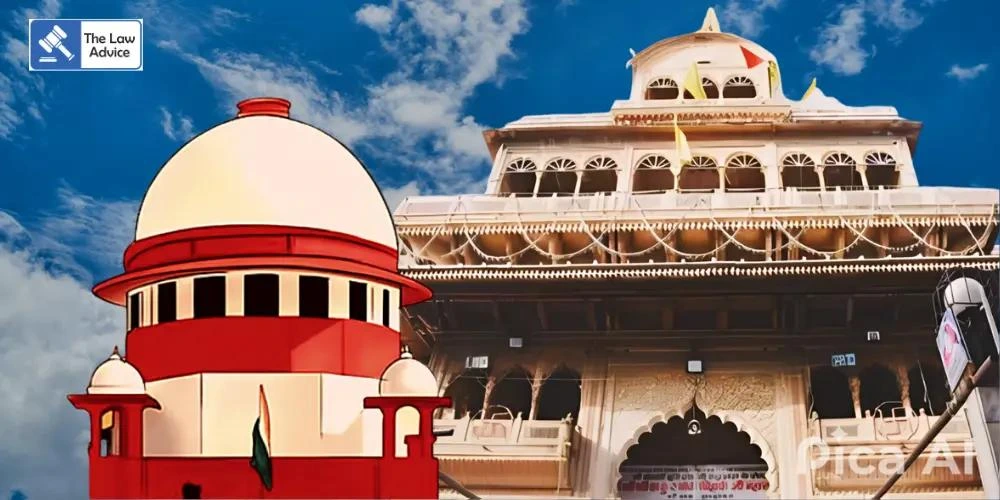New Delhi | August 5, 2025
The Uttar Pradesh Government on Monday came under sharp judicial scrutiny as it defended its ordinance taking over the administration of the iconic Banke Bihari Temple in Vrindavan. In a hearing marked by strong observations and serious constitutional questions, the Supreme Court signaled it may reconsider its earlier approval permitting the state’s intervention.
Appearing before the bench of Justice Surya Kant and Justice Joymalya Bagchi, Additional Solicitor General KM Nataraj clarified that the Uttar Pradesh Shri Bankey Bihari Ji Mandir Nyas Ordinance, 2025 is not intended to alter the religious functioning of the temple.
“The ordinance was brought to ensure smooth administration, infrastructure upgrades, and crowd control. Rituals, priestly rights, and spiritual traditions remain untouched,” said ASG Nataraj.
The state argued that mounting public safety concerns during festivals like Janmashtami, alongside financial mismanagement, necessitated structured oversight.
However, the Bench was not entirely convinced. Justice Surya Kant questioned the “tearing urgency” with which the state enforced the ordinance.
“When the matter was pending, why rush to promulgate an ordinance? Wasn’t the court’s permission being misused in a different context altogether?” the court asked.
The judges also noted that the state’s actions seemed to go beyond mere administration and bordered on legal overreach especially when ancestral rights of the sevayats (hereditary priests) were already a subject of litigation.
Earlier this year, the Supreme Court had allowed the UP Government to utilize temple funds (approximately ₹500 crore) to acquire nearby land to decongest the area and construct a devotee corridor. But this approval was granted in a separate PIL involving other Mathura temples.
Subsequently, the state promulgated the Ordinance on May 26, 2025, establishing a public trust to control the temple — a move seen by many, including hereditary priests, as a breach of constitutional protections under Article 26, which grants religious denominations the right to manage their own affairs.
To balance administration and religious autonomy, the Court proposed creating an interim temple committee headed by a retired High Court judge, comprising:
• The District Magistrate
• Representatives from the Goswami sevayat community
• Local stakeholders and civil society representatives
This move is seen as a temporary buffer until the Allahabad High Court decides on the larger question of the ordinance’s constitutionality.
Senior Advocate Kapil Sibal, representing the sevayat community, argued that the government’s move is cloaked in administration but aimed at displacing traditional management that dates back centuries.
“This is not a state-run institution. The temple is a living deity managed by its hereditary sevaks — the State cannot walk in and declare ownership,” Sibal said.
The petitioners further submitted that the May 15 Supreme Court order (which allowed use of temple funds) was obtained without their participation and has since been used as a backdoor entry into full administrative control.
• Case Title: Devendra Nath Goswami & Ors. v. State of Uttar Pradesh & Ors.
